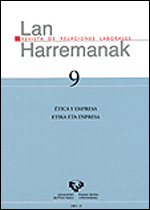Nuevo poder financiero y modelo de empresa: una fuente de fragilidad del sistema
##plugins.themes.bootstrap3.article.main##
##plugins.themes.bootstrap3.article.sidebar##
Resumen
Los Estados Unidos han sido testigo del nacimiento de un nuevo poder financiero, que ha conllevado una redefinición de las relaciones de poder en el sector financiero. Este poder se fue consolidando gracias a los cambios institucionales que marcaron la economía americana de mediados de los años 70, unos cambios que canalizaron un gran flujo de los ahorros de pensiones hacia los mercados financieros. Dicho poder, encarnado sobre todo por los inversores institucionales y sus nuevas demandas y reivindicaciones en relación con los derechos de propiedad, contribuyó a crear un modelo de negocios específico, influenciado tanto por su racionalidad económica como por su organización interna. El objetivo de este modelo consiste en una optimización de la rentabilidad del capital, basada en la mejora de las cotizaciones en bolsa, para lo cual se contó con el apoyo de ciertas personas cercanas a o provenientes de los círculos financieros, profesionales de la competencia y el asesoramiento. El modelo enpresarial resultante se caracteriza por su fragilidad endógena: se encuentra muy fuertemente unido al comportamiento del mercado bursátil y las operaciones de los mercados financieros, de forma que crea cierta inestabilidad en un plazo relativamente largo. Con respecto a otros, este nuevo poder financiero ha resultado ser bastante ineficaz en lo que a la asignación del capital se refiere, debido al coste desorbitado del capital recaudatorio en los mercados financieros, lo que, por otra parte, ha beneficiado considerablemente a las grandes empresas de Wall Street. De la misma manera, ha dado lugar a una redistricución muy asimétrica de la riqueza, siendo la gestión empresarial la más beneficiada.
Cómo citar
##plugins.themes.bootstrap3.article.details##
Los autores que publican en la revista "Lan Harremanak" lo hacen de acuerdo con los siguientes términos:
1. Los autores conservan los derechos de autor de sus trabajos, cediendo a la revista "Lan Harremanak" el derecho a la primera publicación de su artículo.
2. La editorial UPV/EHU Press es copropietaria de los derechos de autor, con el fin de proteger el uso legítimo del artículo publicado y el cumplimiento de los términos CC.
3. Los artículos publicados están sujetos a una licencia CC-BY de Creative Commons (a menos que se indique lo contrario) que permite a terceros compartir el artículo, con la condición de que se especifique el autor y la fuente cuando se reproduce el material.
4. Los autores pueden celebrar otros acuerdos de licencia no exclusivos con respecto a la versión publicada de su trabajo (por ejemplo, depositarlo en un repositorio institucional o volver a publicarlo como un volumen monográfico), siempre que el autor y la fuente reciban el crédito apropiado.
5. La difusión de los artículos enviados a través de Internet está permitida y recomendada (por ejemplo, en repositorios institucionales y/o en la página web del investigador), tanto antes como durante el proceso de envío, ya que esto puede generar diálogos interesantes y también aumentar las citas a la eventual publicación.

